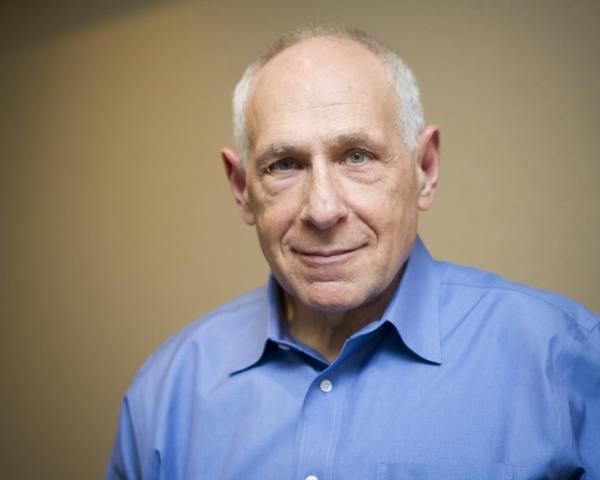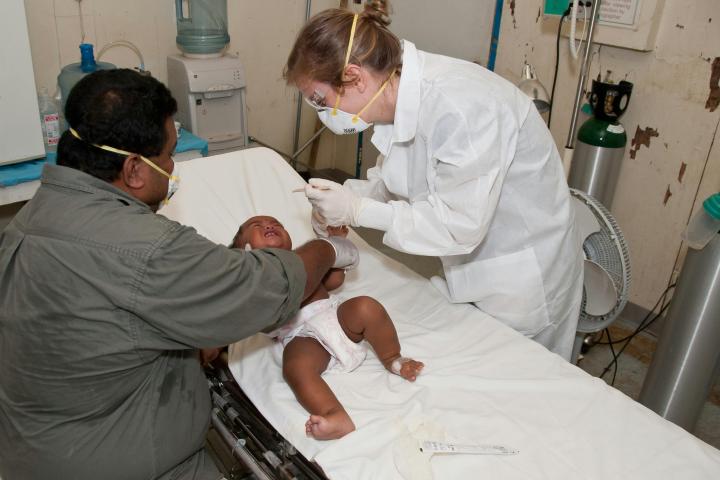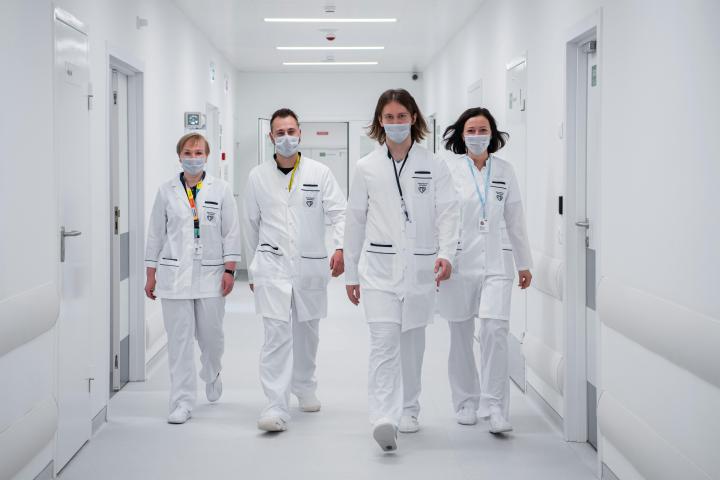
Healthcare Insights: Why Improved Wages Are A Direct Link To Improving Health
We live in a low-wage society, the consequences of which are rarely understood or framed as central to an epidemic of poor health in the richest nation on earth. Just one illustration of what it means to be a low-wage worker in relation to health is captured in the following vignette:
“Within minutes of the formation of the Union of Southern Service Workers (USSW) earlier this month, Quadtrell Adams lay helpless on the walkway outside the Levi C. Chavous Conference Center in Columbia, South Carolina. Moments earlier, Adams had stumbled from the building upon sensing the onset of a seizure, likely triggered by the flash of cameras and the carnival of shout and song inside. Having assisted Adams through previous episodes, fellow union members went into action. Russell Smalls, a convenience store employee, rubbed his friend's chest with turquoise stones, while others spoke to Adams softly and watched over him until his fits had passed.
The 34-year-old Adams and the 150 cofounders of the USSW are among the South's floating army of retail, food service, and care workers. Though they comprise the largest segment of the region's workforce, they are also its most marginalized, their lives defined by their low wages, transience, and invisibility. Adams — or "Gas" as he is more commonly known — has worked in fast food restaurants for years, but is unable to maintain a regular schedule due to the seizures he has suffered since childhood. In recent months, he has worked intermittently as a lumper for a friend who is an over-the-road truck driver and as a hype man at parties and concerts. He rations the costly drugs he needs to properly manage the seizures, and his lack of steady income keeps him reliant on friends and family for housing in his native Charleston.” (“A New Union is Born in the South”, Facing South, November 28, 2022).
On an individual scale, as in the case of Quadtrell Adams, it is relatively easy to understand that his status as a low-wage worker and being unable to purchase medicine is a great challenge. But when we view Mr. Adams’ plight in a frame of the population of the country as a whole, the relationship of low-wages to the health of our population is devastating.
Almost one-third (31.9 percent) of the labor force in the United States earns less than $15 per hour as of 2022. In other words, more than 51.9 million people in the United States are earning less than $31,200 a year. (Source: OXFAM America, March, 2022)
But the truth of low-wages in our nation is even worse:
According to the MIT Wage Calculator, a LIVING Wage for Columbia, SC where the incident took place with Mr. Adams, ranges from $17.12-49.43/HR, the range of wage based on number of children and number of people working in the household.
In truth, half of our population does not earn a LIVING WAGE!

Note: the above slide uses Kansas City, MO as an example of the Living Wage as calculated by the MIT Wage Calculator which indicates what a Living Wage is in all parts of the country. The example of Columbia, SC above illustrates the national consistency which shows that in different parts of the country, half the population at least does not earn a Living Wage. A Living Wage is considered what is necessary to pay for food, child care, medical, housing, transportation, and other necessities. It does NOT include money for savings or vacation.
When we begin to look at the relationship of low-wages to health, the results are stark and frankly are a well-known and accepted driver of poor health.

For many years, it has been widely accepted that what we generally think about when it comes to what makes people healthy, access to healthcare services, represents only 20% of that picture. 80% of the drivers of health come from what is called Social Determinants of Health.



What to do?
As we begin 2023, it is likely that the much-reported-on recent activity in union organizing—from Starbucks to Amazon, to Apple, Google, medical interns and residents, to academic graduate assistants, and non-profits, and more—will continue. Broader, more sectoral organizing is also underway as illustrated in the activity of the Union of Southern Service Workers where the focus is on geographic empowerment of the voice of workers[EO1] .
We should also remind ourselves of the success of the Fight for $15/hour, which began with walkouts at McDonalds stores in New York City in 2012. By now, that movement has raised wages for 26 million workers across the nation, (Source: National Employment Law Project, July 27, 2021), and led to the establishment in California of the Fast Food Workers Council created by an Act of the Legislature and signed by Governor Gavin Newsom. (As of this writing, the Council awaits implementation as a variety of opposition forces are attempting to have it overturned by a Ballot Measure).
If and when the work of the Council is implemented, it would impact 550,000 California fast-food workers, raising wages to $22/hr (Source: VOX news, September 6, 2022) and improving working conditions on a scale unprecedented in this nation since the days of national industrial collective bargaining agreements (which have largely gone by the wayside over the past 40 years).
So, as we think about the health of our people, keeping in mind the fundamental link of health and wage and employment insecurity, let us also keep in mind that our nation’s riches are being wasted when it comes to what we get in exchange for the greatest amount of GDP spent in the world on healthcare:

Nearly 20% of our nation’s GDP is spent on healthcare, yet we rank last by far when it comes to the overall health of our population. We are getting it all wrong as a nation! We spend and spend and spend on healthcare services while we know that only 20% of health outcomes are attributable to healthcare services. Recall that the other 80% of health outcomes are determined by the social determinants of health. Standing in the center of the social determinants are income/employment insecurity!
There are signs that worker organizing is on the upswing…and most agree that increased union strength is the best means to raise wages. Union organizing takes time, time we do not have, especially as it relates to health. Health in our nation will continue to deteriorate as wages remain stagnant. We can’t wait around for labor law reform or some other “silver bullet” to enhance worker voice and empowerment.
Many today discuss the re-building of worker empowerment as the path to a new social contract. What is more central to a social contract than health?
Jean-Jacques Rousseau wrote about the Social Contract in 1762: “people could only experience true freedom if they lived in a civil society that ensured the rights and well-being of its citizens”.
Our column on Health Insights focuses on transformed labor-management relationships based on higher purpose and mutual interest. We begin 2023 with these thoughts on improved wages as a direct link to improving health, and how we must transform our thinking and our work to promote and expand deep innovations in 21st century organizing and collective bargaining.
John August is the Scheinman Institute’s Director of Healthcare and Partner Programs. His expertise in healthcare and labor relations spans 40 years. John previously served as the Executive Director of the Coalition of Kaiser Permanente Unions from April 2006 until July 2013. With revenues of 88 billion dollars and over 300,000 employees, Kaiser is one of the largest healthcare plans in the US. While serving as Executive Director of the Coalition, John was the co-chair of the Labor-Management Partnership at Kaiser Permanente, the largest, most complex, and most successful labor-management partnership in U.S. history. He also led the Coalition as chief negotiator in three successful rounds of National Bargaining in 2008, 2010, and 2012 on behalf of 100,000 members of the Coalition.




